New Pet, No Worries! 10 Essential Steps for a Smooth Dog or Cat Welcome
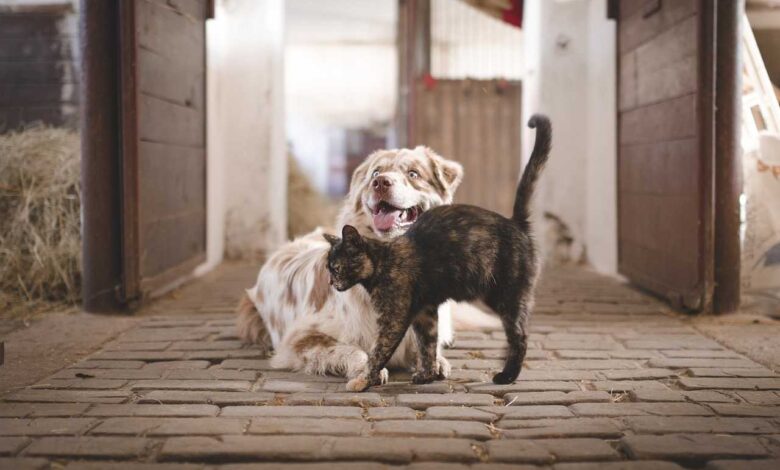
Welcoming a new pet into your home is an exciting and rewarding experience. Whether you’re bringing home a new dog or preparing for a new cat, ensuring a smooth transition is key to forming a happy and healthy relationship with your furry friend. This guide will provide you with essential tips, checklists, and advice to make the first days and nights with your new pet enjoyable and stress-free. By preparing properly, you can help your new companion feel safe, loved, and secure from the moment they arrive.
Preparing Your Home for a New Pet
Pet-Proofing Your Home
Before bringing your new dog or cat home, it’s essential to pet-proof your living space. This involves removing any hazardous items, securing loose wires, and ensuring that toxic plants or substances are out of reach. Use baby gates to block off restricted areas and ensure that your home is safe for your new pet.
- Remove Hazards: Ensure that electrical cords, toxic plants, cleaning supplies, and small objects that could be swallowed are out of reach. Dogs and cats are curious by nature, and even things you wouldn’t expect can pose a risk.
- Secure Trash Cans: Use bins with secure lids to prevent your pet from rummaging through garbage and potentially ingesting harmful substances.
- Block Off Restricted Areas: Use baby gates or pet barriers to keep your pet away from certain areas in your home, such as the kitchen or home office.
- Hide Valuables: Keep items like shoes, remote controls, and children’s toys out of reach to prevent them from being chewed or damaged.

Essential Supplies for Dogs and Cats
New Dog Supplies
When preparing to bring a new dog home, it’s important to have all the necessary supplies ready. These items will help your dog feel comfortable and assist in training.
- Food and Water Bowls: Choose sturdy, non-slip bowls made of stainless steel or ceramic, which are easier to clean and less likely to harbor bacteria than plastic.
- Dog Bed Options: Select a comfortable bed that fits your dog’s size and needs. Orthopedic beds are great for older dogs, while puppies may prefer a bed with raised sides for security.
- Crate Training for Puppies: Invest in a crate for training and a safe space. Ensure it’s large enough for your dog to stand, turn around, and lie down comfortably.
- Dog Toys for Puppies: Provide a variety of toys to keep them entertained and mentally stimulated. Chew toys, puzzle toys, and plush toys are all good options.
- Leash and Collar: Ensure a good fit and durability. A harness can also be beneficial, especially for small dogs or those prone to pulling.
- Dog Walking Essentials: Have a harness, waste bags, and identification tags ready. A retractable leash can offer more freedom during walks.
New Cat Supplies
Preparing for a new cat involves gathering supplies that will help them feel secure and comfortable in their new home.
- Food and Water Bowls: Stainless steel or ceramic bowls are ideal as they are easy to clean and do not harbor bacteria like plastic.
- Cat Bed Options: Choose a cozy bed or blanket. Cats often prefer enclosed spaces, so consider a bed with a hood or an igloo-style bed.
- Litter Box Training for Kittens: A suitable litter box and litter type are essential. Ensure the box is easily accessible and cleaned regularly to encourage use.
- Cat Toys for Kittens: Interactive and engaging toys, such as feather wands, laser pointers, and balls, can help keep your cat entertained.
- Cat Scratching Post: To save your furniture and keep them entertained. A sturdy scratching post or cat tree provides a great outlet for scratching behavior.
- Cat Carrier Needs: For safe transport to the vet or new environments. Choose a carrier that is secure and comfortable, with plenty of ventilation.
The First Day and Night with Your New Pet
First Day with a New Dog
The first day with your new dog is crucial for setting the tone of your relationship and helping them feel at ease in their new home.
- Welcoming a New Pet: Keep the environment calm and quiet. Avoid overwhelming your dog with too many new experiences at once. Allow them to explore their new surroundings at their own pace.
- New Pet Introduction: Allow your dog to explore and get used to their new surroundings. Show them where their bed, food, and water bowls are located.
- Establish a Routine: Start with a feeding and walking schedule. Dogs thrive on routine, and establishing one early on will help them feel secure and understand what to expect.
First Night with a New Cat
The first night with your new cat can be a bit stressful for them, so it’s important to create a safe and comforting environment.
- Preparing for a New Cat: Set up a designated safe space. This could be a small room or a sectioned-off area with all their essentials: bed, litter box, food, and water.
- Cat Acclimation Process: Give your cat time to adjust and explore. Some cats may hide at first; let them come out and explore when they feel ready.
- Nighttime Routine: Ensure they have access to food, water, and a litter box. Spend some quiet time with them, but don’t force interaction if they seem scared.

Training and Socialization
Dog Socialization Tips
Socializing your dog is essential for their development and helps them become well-adjusted adults.
- Introducing New Pet to Children: Teach children to interact gently and respectfully with the new dog. Supervise all interactions to prevent accidents or misunderstandings.
- Introducing New Pet to Other Pets: Supervise initial meetings and go slow. Allow them to sniff and get to know each other without forcing interaction. Use positive reinforcement to encourage calm behavior.
- Essential Dog Commands: Start with basic commands like sit, stay, and come. Training sessions should be short and positive, using treats and praise to reward good behavior.
Essential Cat Training
Training a cat involves patience and consistency. Focus on positive reinforcement to encourage desired behaviors.
- Litter Box Training for Kittens: Consistency is key. Place your kitten in the litter box after meals and naps until they get the hang of it.
- Cat Acclimation Process: Gradually introduce new environments and people. Allow your cat to explore new areas of the house at their own pace.
- Positive Reinforcement: Reward good behavior with treats and praise. Never punish your cat for mistakes; instead, redirect their behavior to a more appropriate action.
Health and Veterinary Care
Dog Vet Visit Checklist
Regular veterinary care is essential to keep your dog healthy and happy.
- First Vet Visit: Schedule a check-up within the first week. Bring any medical records or vaccination history from the breeder or shelter.
- Vaccinations and Preventive Care: Stay up-to-date with shots and medications. Discuss a vaccination schedule with your vet and inquire about flea, tick, and heartworm prevention.
- New Pet Insurance: Consider getting insurance to cover health expenses. Pet insurance can help offset the cost of unexpected medical bills.
Cat Vet Visit Checklist
Cats require regular veterinary care to stay healthy and catch any potential health issues early.
- Initial Health Check: Ensure your cat is healthy and free from parasites. Bring any medical records you have and discuss any concerns with your vet.
- Vaccinations: Keep vaccinations current. Your vet will provide a vaccination schedule tailored to your cat’s needs.
- New Pet Insurance: Evaluate pet insurance options for coverage. Pet insurance can be particularly beneficial for covering the cost of emergency care and chronic conditions.
Lifestyle and Daily Routine
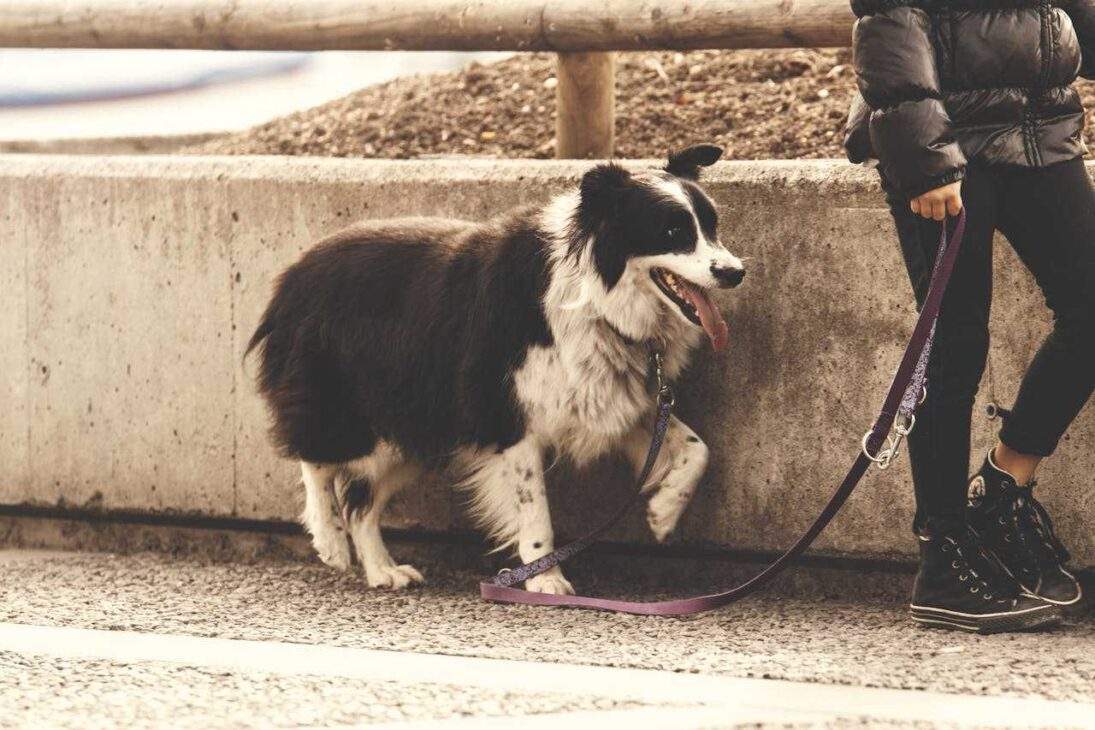
Dog Walking Routine
Establishing a consistent walking routine is important for your dog’s physical and mental well-being.
- Consistent Schedule: Regular walks to establish routine and exercise. Aim for at least two walks a day, adjusting the length and frequency based on your dog’s age and energy level.
- Dog Walking Essentials: Keep essentials like leashes, harnesses, and waste bags ready. Consider using a harness for better control and to prevent neck injuries.
Cat Feeding Schedule
A consistent feeding schedule helps maintain your cat’s health and well-being.
- Regular Feeding Times: Consistent meal times to help with routine. Most cats do well with two meals a day, spaced 12 hours apart.
- Balanced Diet: Ensure your cat’s diet meets their nutritional needs. Consult your vet for recommendations on the best food for your cat’s age, weight, and health.
Handling Pet Accidents and Behavior Issues
Cleaning Up Pet Accidents
Accidents happen, especially with new pets. Knowing how to clean up properly is essential for maintaining a clean home and preventing repeat accidents.
- Effective Cleaning: Use pet-safe cleaners to remove stains and odors. Enzymatic cleaners are particularly effective at breaking down the proteins in urine and other messes.
- Preventing Future Accidents: Address the underlying cause, such as training or medical issues. Regular bathroom breaks and consistent training can help reduce accidents.
Additional Tips for a Smooth Transition
Introducing New Pet to Children
Children should be taught how to interact with pets gently and respectfully. Supervision is key to ensuring safe interactions and building positive relationships.
- Teach Respectful Interaction: Show children how to pet gently and avoid pulling ears or tails.
- Set Boundaries: Explain the importance of giving the pet space, especially when they are eating or sleeping.
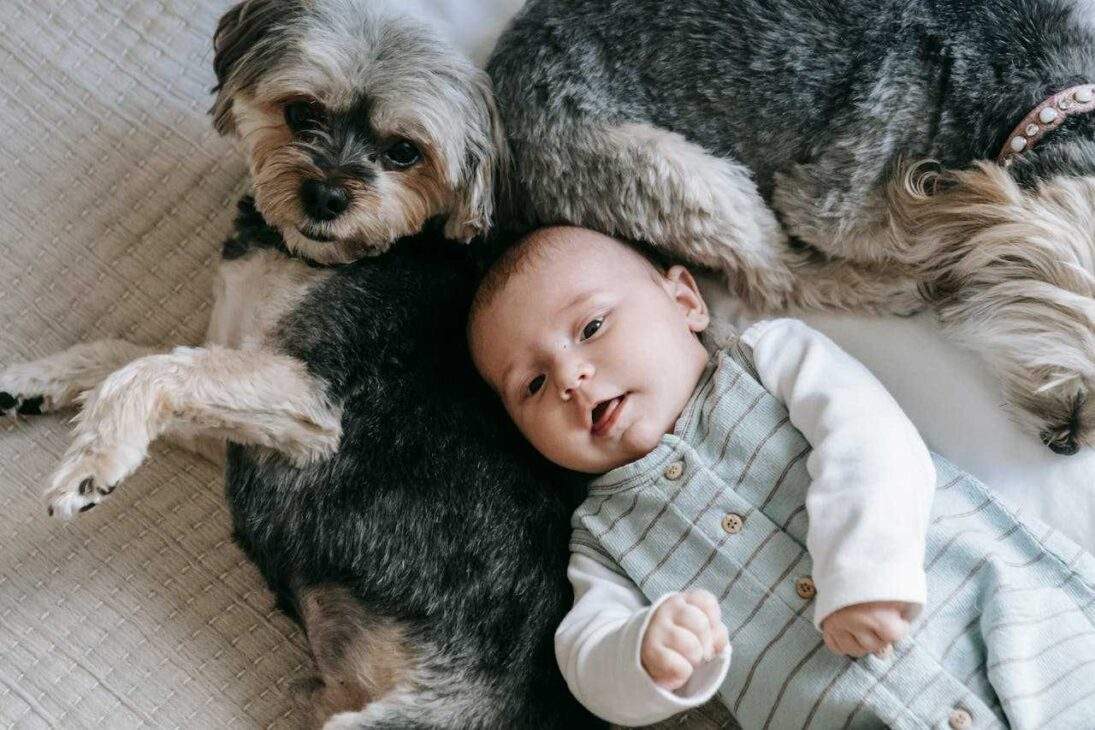
Introducing New Pet to Other Pets
Introducing a new pet to existing pets requires patience and careful planning to ensure positive interactions.
- Gradual Introductions: Start with short, supervised meetings and gradually increase the time they spend together.
- Positive Reinforcement: Reward both pets for calm behavior with treats and praise.
Managing Separation Anxiety
New pets can experience separation anxiety as they adjust to their new environment. Gradually increasing the time your pet spends alone can help them feel more comfortable.
- Create a Safe Space: Ensure your pet has a comfortable area where they feel secure when left alone.
- Gradual Departures: Start by leaving your pet alone for short periods and gradually increase the time.
Creating a Pet-Friendly Environment
Enrichment Activities
Keeping your pet mentally stimulated is important for their overall well-being.
- Interactive Toys: Puzzle toys and treat dispensers can provide mental stimulation for both dogs and cats.
- Exercise: Regular playtime and exercise help keep your pet physically fit and mentally sharp.
Establishing Boundaries
Setting boundaries helps your pet understand the rules of their new home and prevents behavioral issues.
- Consistent Rules: Ensure all family members are on the same page regarding pet rules, such as whether the pet is allowed on furniture.
- Positive Reinforcement: Use rewards to encourage good behavior and redirect undesirable behavior.
Preparing for Long-Term Care
Routine Veterinary Care
Regular vet visits are essential for maintaining your pet’s health and catching potential issues early.
- Annual Check-Ups: Schedule annual check-ups to monitor your pet’s health.
- Preventive care: Keep up with vaccinations, flea/tick prevention, and dental care.
Pet Insurance
Investing in pet insurance can provide peace of mind and financial assistance in case of emergencies.
- Coverage Options: Research different pet insurance plans to find one that fits your needs and budget.
- Routine vs. Emergency Care: Understand what is covered under your plan, including routine check-ups, emergency visits, and chronic conditions.

New Pet
Bringing a new dog or cat into your home is a joyous occasion, but it requires careful preparation and ongoing care. By following the tips and checklists provided in this guide, you can ensure a smooth and happy transition for your new pet, setting the foundation for a loving and lifelong bond. Remember, patience, consistency, and love are key to helping your new companion feel safe, secure, and cherished in their new home.
Frequently Asked Questions (FAQ)
1. How should I introduce my new dog to my existing pets?
Introducing a new dog to your existing pets should be done gradually and carefully to ensure a positive experience for all animals involved.
- Initial Meeting: Choose a neutral location, like a park, where neither animal feels territorial. Keep both pets on leashes and allow them to sniff each other from a distance.
- Short, Supervised Interactions: Gradually increase the length of their interactions while keeping them on leashes. Monitor their body language for signs of aggression or stress.
- Positive Reinforcement: Reward both pets with treats and praise for calm behavior. Avoid scolding or punishing them if they react negatively; instead, calmly separate them and try again later.
- Separate Spaces: In the beginning, provide separate spaces for each pet in your home where they can retreat and feel safe. Gradually allow more interaction as they become more comfortable with each other.
2. What are some tips for helping my new cat adjust to its new home?
Helping a new cat adjust to its new home requires patience and a calm environment.
- Designated Safe Space: Set up a quiet, secure area for your cat with their litter box, food, water, and bed. This will be their safe space while they acclimate.
- Gradual Exploration: Allow your cat to explore one room at a time. Don’t force them to come out of hiding; they will explore when they feel ready.
- Consistent Routine: Establish a feeding and playtime routine. Consistency helps cats feel secure.
- Interactive Play: Spend time playing with your cat using toys like feather wands or laser pointers to help them build confidence and bond with you.
3. What supplies do I need to bring home a new puppy?
Bringing home a new puppy requires several essential supplies to ensure their comfort and safety.
- Food and Water Bowls: Non-slip, easy-to-clean bowls.
- Puppy Food: High-quality, age-appropriate food.
- Crate: For training and providing a safe space.
- Bedding: Comfortable bed or blanket.
- Toys: Chew toys, plush toys, and puzzle toys.
- Collar and Leash: Properly fitting collar and leash.
- Training Pads: For house training.
- Grooming Supplies: Brush, shampoo, nail clippers.
- ID Tag: With your contact information.
4. How can I pet-proof my home for a new kitten?
Pet-proofing your home for a new kitten involves removing hazards and creating a safe environment.
- Secure Cords and Wires: Hide or secure electrical cords to prevent chewing.
- Remove Toxic Plants: Ensure that all plants in your home are non-toxic to cats.
- Block Small Spaces: Close off small gaps or spaces where a kitten could get stuck.
- Secure Cabinets: Use childproof locks to keep curious kittens out of cabinets containing cleaning supplies or chemicals.
- Safe Toys: Provide safe, kitten-friendly toys to keep them entertained and prevent them from playing with dangerous objects.
5. What should I do if my new pet has an accident in the house?
Handling pet accidents calmly and effectively is crucial to maintaining a clean home and continuing training.
- Immediate Cleanup: Use paper towels to blot up as much of the mess as possible.
- Enzymatic Cleaner: Use a pet-safe enzymatic cleaner to break down the proteins in the urine or feces, removing the stain and odor completely.
- Avoid Punishment: Do not scold or punish your pet for accidents; this can create fear and anxiety. Instead, reinforce positive behavior by praising and rewarding your pet when they go to the bathroom in the correct spot.
- Regular Bathroom Breaks: Ensure your pet has regular opportunities to go outside (for dogs) or access to a clean litter box (for cats).
6. How do I choose the right pet insurance plan?
Choosing the right pet insurance plan involves researching and comparing different options to find the best fit for your pet’s needs.
- Coverage Options: Look at what each plan covers, including accidents, illnesses, routine care, and emergency visits.
- Exclusions: Understand what is not covered by the plan, such as pre-existing conditions or specific breed-related issues.
- Reimbursement Levels: Check the reimbursement rates and whether they are based on actual vet bills or a benefits schedule.
- Deductibles and Premiums: Consider the deductible amount and the monthly or annual premium. Higher deductibles often mean lower premiums, but you’ll pay more out-of-pocket for each claim.
- Customer Reviews: Read reviews and testimonials from other pet owners to gauge satisfaction with the insurance provider’s service and claim process.
7. How can I help my new pet with separation anxiety?
Separation anxiety in pets can be managed with patience and consistent training.
- Gradual Departures: Start by leaving your pet alone for short periods and gradually increase the time. Always remain calm and neutral when leaving and returning.
- Comfort Items: Leave a piece of clothing with your scent or a favorite toy to provide comfort.
- Create a Safe Space: Ensure your pet has a comfortable, secure area where they feel safe.
- Exercise and Mental Stimulation: Provide plenty of physical exercise and mental stimulation to keep your pet tired and content.
- Calming Aids: Consider using calming sprays, diffusers, or treats designed to reduce anxiety. In severe cases, consult your veterinarian for additional advice or medication.
8. What is the best way to train a new dog in basic commands?
Training a new dog in basic commands requires consistency, patience, and positive reinforcement.
- Start with the Basics: Focus on simple commands like sit, stay, come, and down.
- Short Sessions: Keep training sessions short and frequent, around 5-10 minutes each, to maintain your dog’s attention.
- Positive Reinforcement: Use treats, praise, and affection to reward your dog when they correctly follow a command.
- Clear Commands: Use clear, consistent verbal cues and hand signals.
- Practice Regularly: Practice commands in different environments and gradually introduce distractions to reinforce learning.
9. How can I encourage my new cat to use the litter box?
Encouraging your new cat to use the litter box involves creating a comfortable and appealing environment for them.
- Location: Place the litter box in a quiet, accessible area. Avoid high-traffic or noisy locations.
- Cleanliness: Keep the litter box clean by scooping daily and changing the litter regularly.
- Type of Litter: Experiment with different types of litter to find one your cat prefers. Some cats are picky about texture and scent.
- Size and Number of Boxes: Ensure the litter box is large enough for your cat. If you have multiple cats, provide one litter box per cat, plus one extra.
- Positive Reinforcement: Praise and reward your cat when they use the litter box. Avoid punishing or scolding them for accidents.
10. What should I consider when choosing the right food for my new pet?
Choosing the right food for your new pet involves considering their age, size, breed, and any specific dietary needs or health conditions.
- Life Stage: Select food appropriate for your pet’s life stage (puppy/kitten, adult, senior).
- Nutritional Requirements: Ensure the food meets the nutritional requirements for your pet’s breed and size. Consult your vet for recommendations.
- Quality Ingredients: Look for foods with high-quality, recognizable ingredients. Avoid those with fillers, artificial preservatives, or by-products.
- Special Needs: If your pet has specific health conditions, such as allergies or sensitivities, choose a food formulated to address those issues.
- Gradual Transition: When introducing a new food, gradually mix it with the old food over a week to prevent digestive upset.




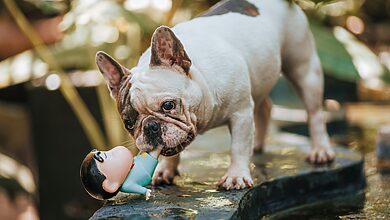

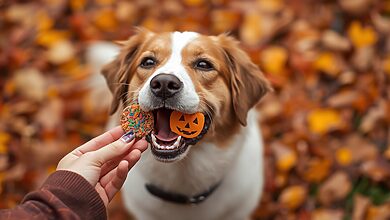
The bathing-and-brushing routine for doodles was spot-on. My Goldendoodle, Daisy, usually loathes baths, but your step-by-step approach kept her calm throughout. Honestly, it felt like having a professional groomer at home!